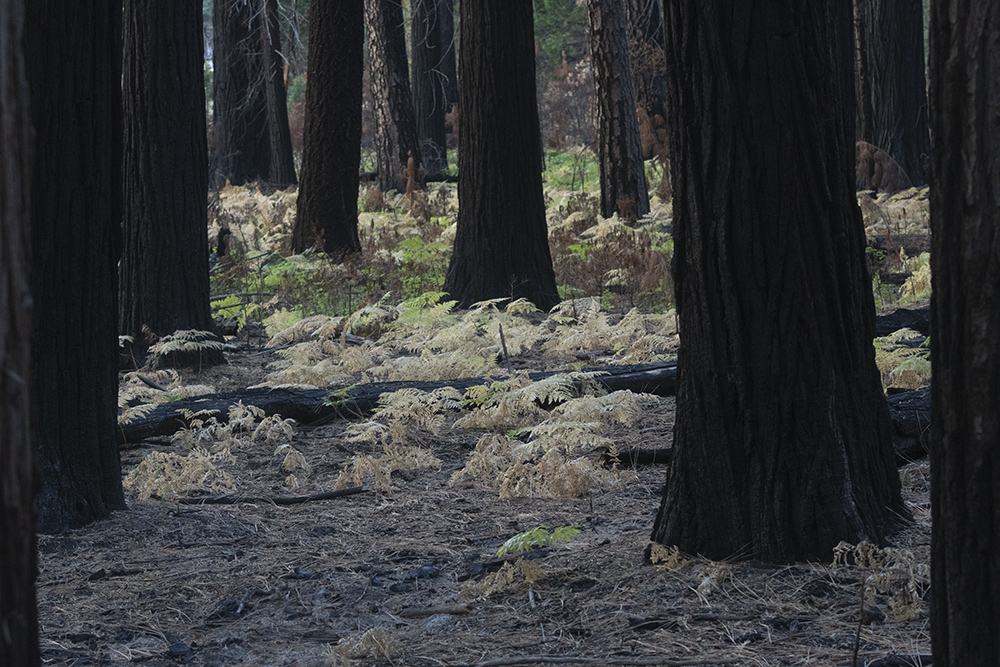Next
|
Rock, Water & Wood
|
 |
 |
 |
Granite defines the
Valley, from sheer gray faces streaked with dark and
light patches, cracks and crevasses, and bumps and
irregularities, to large boulders that long ago crashed
to the Valley floor. Trees, shrubs and lichens manage to
find cracks and ledges on which to grow despite the
inhospitable environment. At night, look along the
rock faces in the Valley, and you can sometimes spot a
lantern or two hundreds of feet up, showing where a
climber or climbers are bivouacked.
|
 |
 |
 |
 |
Water feeds life in the Valley.
While the dramatic waterfalls naturally draw attention,
in the wet season many smaller flows trickle down the
granite walls. In summer, visitors may opt for a
leisurely float down the Merced River in inflatable
rafts. The waters of the Merced River are calm in
summer and now, in late October, but markers show the
levels record floods reached in 1997. A nighttime
rainstorm drums against the tent. Morning dew
drops decorate spider webs.
|
 |
 |
 |
The Valley is home to an assortment of
trees including towering pines and magnificent
oaks. A healthy forest provides habitat for
animals and shade and inspiration for visitors.
Miwok Indians ground and ate the black oak acorns as a
staple food and used cedar bark to build shelters.
The size of some of the trees and the fact that they
have been around for several hundred years gives cause
for reflection. As winter approaches, leaves of
deciduous trees turn yellow. A gust of wind can
cause a flurry of falling leaves. However, the
health of the forest cannot be taken for granted.
Sound management practices are important. For
example, in June the Park Service did prescribed burns
along Southside Drive in Sentinel Meadow, west of the
Yosemite Chapel. It remains to be seen what
impacts climate change could have; in the past year the
L.A. Times has run a number of articles
detailing how forests in the Southern Sierra Nevada are
already struggling, but for now the Valley remains an
oasis.
|
| Next |











